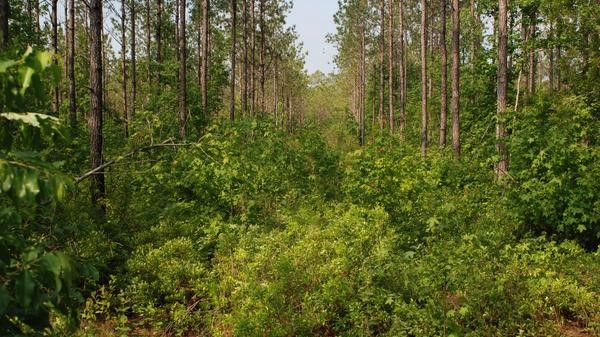Hunting Season Is Over - Now What?
By: John Cristinziani
The winter blues are now upon us but this can be the best time of the year for you to take advantage of some very important elements on your property. One of the most important factors to holding more deer is to make sure that your deer habitat has plenty of cover. Creating or improving bedding areas on your property is key to successful deer management. If you need to clear out some trees or create cover, now is the time to do so, before the snow gets too deep. You’ll find some tips in this article for some winter habitat projects you can tackle before spring comes around. Keep in mind these tips are for your personal private hunting property only. If you hunt on public land cutting down trees is usually prohibited.
CREATE COVER

One of the best things you can do for your deer herd’s habitat is to provide the deer with cover. Deer create their bedding areas in areas of heavy cover like thick bush, cedar plantations or low-hanging branches. If your deer habitat doesn’t have any natural areas of cover, you can create them by hinge-cutting trees. Hinge-cutting is established by cutting halfway through a tree so that the tree bends over in half. This technique will provide the deer with excellent cover from the low-hanging branches. The objective is for the trees to continue living for several years to come.
LET IN THE SUNLIGHT
 Food plots are an integral part of quality management for Whitetails. But offering natural food is a very effective way to add forage tonnage to any property. Inspect the property for dying trees, trees that might not produce viable timber or benefit wildlife. If you find these trees, consider cutting them down to create an opening in the forest canopy to let in the sunlight and allow it to hit the forest floor. The general rule is that if you were to lay down on the ground and look up towards the sky, if tree branches or leaves are obstructing your view, then the canopy should be opened up. The sunlight will help promote new natural vegetation growth and provide additional tonnage of food for your deer. It will also encourage deer to spend more time on your property. The more comfortable a deer feels in an area, the more likely they are to bed there.
Food plots are an integral part of quality management for Whitetails. But offering natural food is a very effective way to add forage tonnage to any property. Inspect the property for dying trees, trees that might not produce viable timber or benefit wildlife. If you find these trees, consider cutting them down to create an opening in the forest canopy to let in the sunlight and allow it to hit the forest floor. The general rule is that if you were to lay down on the ground and look up towards the sky, if tree branches or leaves are obstructing your view, then the canopy should be opened up. The sunlight will help promote new natural vegetation growth and provide additional tonnage of food for your deer. It will also encourage deer to spend more time on your property. The more comfortable a deer feels in an area, the more likely they are to bed there.
For example, an un-thinned pine plantation can shade out understory vegetation, reducing food and cover for wildlife. Thinning allows sunlight to reach the forest floor, which promotes the growth of understory, shrubs and vegetation valuable to many animals.
CLEAR YOUR SHOOTING LANES

Now is also a good time to clear shooting lanes that you perhaps did not attend to when originally installing the stand/blind or. Identify areas that obstructed a potential shot at a deer the previous hunting season and clear them so the situation does not repeat itself for next year. You don’t want to come across the same scenario next year when a buck comes into view and you can’t take an ethical shot because there are too many branches in the way. If putting up a new stand or erecting a new box blind, choose the location where you’d like to place your stand and clear the area around it just enough to give you a clear path. You don’t want to trim too much shrubbery that you are exposed, but clear enough that your shot will be unobstructed. If you’re elevating your blind, leave the understory and other vegetation under your blind to help it blend into the landscape.
MONITOR YOUR DEER HERD

Leave some trail cameras out all year long to monitor the deer herd’s movements and gather research and intel throughout the course of the year. You’ll be able to better evaluate the buck to doe ratio, and you’ll acquire a bunch of cool information such as whether a target buck made it through the hunting season or when the bucks shed their antlers or where they tend to spend their time etc... Many of the new trail cameras now have GPS incorporated in them so there is less chance of getting them stolen when leaving them out all year and more important, it helps you to easily find them again if they do get stolen as you will be able to pinpoint their location.
Good deer habitat will encourage the herd to frequent your property and even take up residency on it. As long as they can find food, an accessible water source, cover and minimal disturbance or pressure, they’ll continue to visit throughout the year.
Consider the tasks above to ensure that you are providing the best possible habitat for your deer and to provide them the cover they need. Consider where you’re going to place your stands or blinds when you establish the improvements and you will set yourself up for triumph for next season.
